“Shōgun” Editors Aika Miyake and Maria Gonzales on Cutting Mariko’s Heroic Path
The first season of Justin Marks and Rachel Kondo’s masterful Shōgun was an expertly paced slow-burn drama that plunged viewers into 17th-century Japan with a passionate obsession with the rigors and wonders of the period and location. The new Shōgun shifts its center of balance from the swashbuckling but woefully out of his depth British pirate Blackthorne (Cosmo Jarvis) to his Japanese captors. Blackthorne has washed ashore on a land in the midst of a tectonic power shift, with Ishido Kazunari (Takehiro Hira) plotting his takeover in Osaka while the brilliant but taciturn Lord Yoshi Toranaga (star and producer Hiroyuki Sanada) strategizes a way to keep the peace and, if possible, his own head in the process. He entrusts the brilliant, emotionally bruised Lady Mariko (Anna Sawai) to act as his translator to the “Anjin,” their name for Blackthorne, whom Toranaga sees as a potential key chess piece in his eventual move against Ishido.
All of this plays out over a perfectly paced 10-episode arc, easily one of the most captivating seasons of television this year. While editors Aika Miyake and Maria Gonzales are quick to point to the embarrassment of riches they had to work with—sensational performances, an incredible story, period-perfect details—it was their work, alongside fellow editor Thomas A. Krueger, that gave the rebooted Shōgun its perfect, haunting shape.
We spoke to Miyake and Gonzalez about what it was like cutting a series with an ensemble that included so many memorable performances and pacing a story that never felt rushed or halting but moved with its own brilliant, brutal logic.
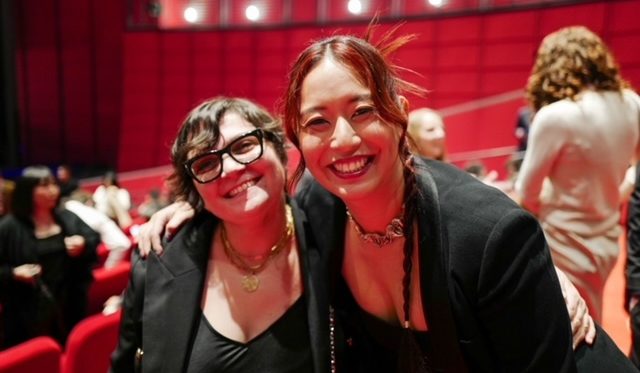
What conversations were you having with showrunner Justin Marks about your approach to pacing the series?
Maria: Maybe a week before they started shooting an episode, we have these tone meetings, which for Justin are kind of legendary on his shows because they can go for hours or even sometimes a couple of days. Justin is a cinephile, so we hear a lot about movies that inspired him and what TV shows inspired him, but there’s no specific talk about pace. I think for both Aika and me, once we started getting the footage, you just sort of let the footage guide you on what it wants to be.
Aika: A funny thing about our show is that we have Japanese and English, and Japanese tends to take twice as long to be said. So I looked at the subtitles in the initial cut, and they just sat there for a long time. So I remember the moment realizing I had to cater to both Japanese and English audiences and strike a good balance so the Japanese subtitles weren’t too fast and the English subtitles weren’t too slow—that contributed to pacing. And to add to Maria’s point, we had so much great stuff that it could feel like, “I don’t want to let it go,” but you have to make difficult decisions. And Justin and the studio allowed us to experiment.
How do you make those difficult decisions about cutting sequences and scenes you love?
Maria: So initially, we do our cut, and then we work with the director of the episode for several days on their cut. And for the most part, the directors cut very few scenes. Once we get to Justin, a lot of the really big decisions get made. There was a lot of back and forth, and some lovely scenes in the first episode had to go because you’re weighing your options and asking, “Am I getting the same emotion from this other scene?” We also had lovely scripts and all the work that Justin, Rachel [Kondo], and the writers did to establish these really dynamic characters. And casting did a phenomenal job, like casting Tadanobu Asano as Yabushige. So it was just an embarrassment of riches for us when those dailies started coming in, so it was our job to give its due and do it justice. It’s inherent that information will repeat, but to Justin’s credit, he never wanted to dumb the show down for the audience. There was a trust that the audience was in on the ride and would get it.
Aika: I want to add something to what Maria said about the repetitiveness of emotions or information. We identify if two lines are actually doing the same thing, so when something felt really repetitive, I’d explain to Justin that’s why I just took this line out. We had that freedom to explore, and I really appreciated getting that space. I remember in episode 8, the initial cut was a hundred minutes or so, and I remember the shift where we had a lot of Ochiba [Fumi Nikaidô] scenes at the beginning of the episode, but while we started editing the whole thing, episode 6 was more about Ochiba, and that was doing enough of her story that we didn’t have to come back to it in episode 8. When I took it out, it felt so right. I watched episodes 5 through 8, and the flow made sense at that point.
(Spoiler alert) An interesting element of the series is that Toranaga is a step ahead of everyone, including the viewer, throughout the season. This is especially true in episode 8, when his number two guy, Toda [Tokuma Nishioka], commits seppuku in what appears to be despair at Toranaga’s decision to give up.
Aika: My understanding was there were spies everywhere. In episode 2, one of the Kosho working for Toranaga turns out to be a ninja coming to kill Blackthorne. So, understanding the world and everyone’s a spy, I understood that Toranaga had to have a poker face in that scene with Toda. Once you understand that, you understand the acting choices that Hiroyuki Sanada makes. He’s almost a guide for me to pick out the good parts and build the story. Especially the scene with Toda committing seppuku. In my first cut, I missed this close-up of Hiromatsu and Toranaga staring at each other. Toranaga flinched a little bit, and Hiromatsu realized he was doing it for real. That was something that director Emmanuel Osei-Kuffour said, “This has to be in this scene.” I understood then the way the scene was built, and that moment was so crucial. Hiromatsu didn’t exactly understand what Toranaga was doing, but he trusted him enough that he must die today. That was a huge, huge moment.
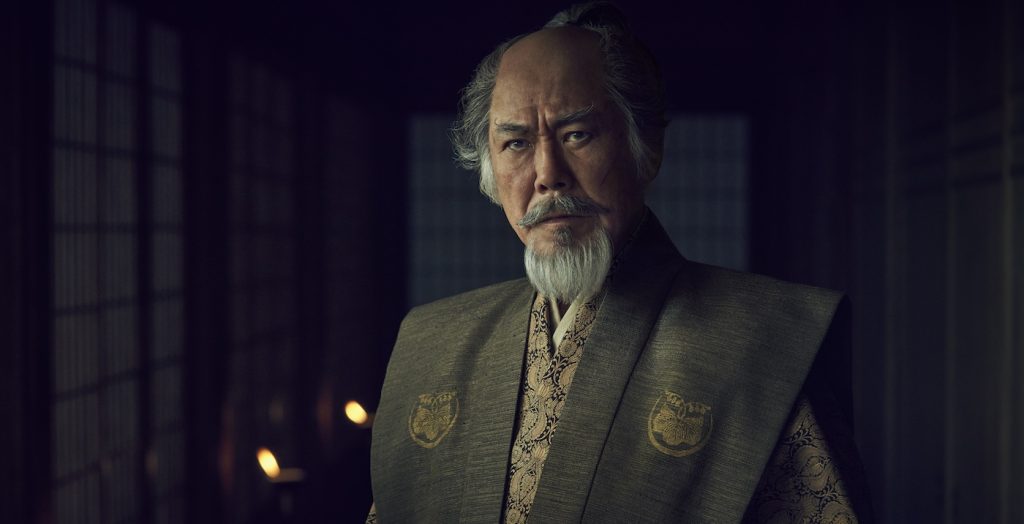
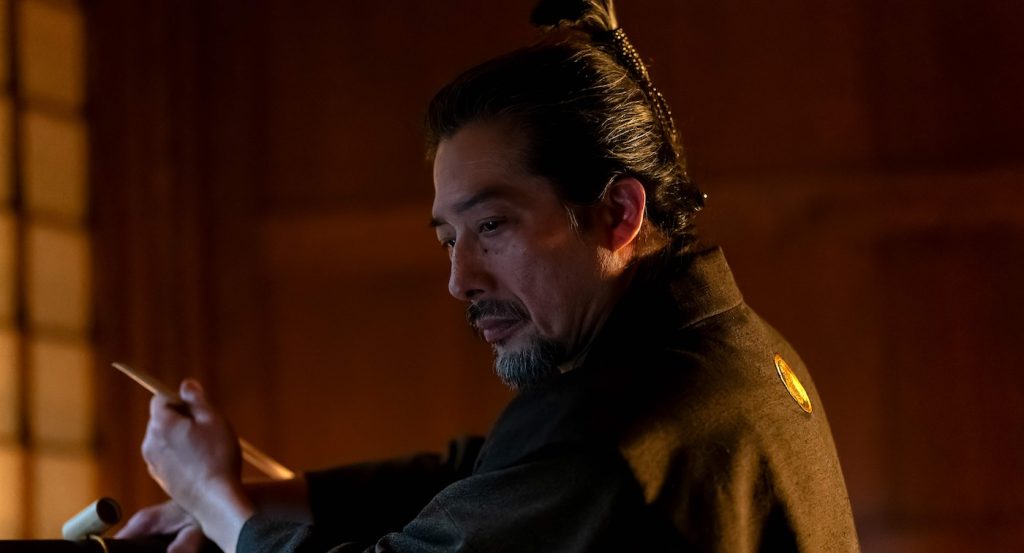
Maria: I think the way Hiroyuki Sanada performs, there’s no real choice to make on our part. It’s not like we were going through a variety of takes and trying to make sure he stayed consistent; he was very consistent. He knew what this role was. So, between him and the writing, I think it was kind of inherent to the project.
Aika: The funny thing about that scene is it’s the most emotional we see Toranaga, and he’s really holding back.
Maria: It’s the only time really in the show he’s emotional, there and a little bit toward the end when Mariko dies, but for the most part he’s very consistent and on his mission.
Let’s end with Mariko, who is such an amazing character. You could argue that among all these fascinating characters, she ends up becoming the one we root for the most. I’d love to hear about what it was like cutting Anna Sawai’s amazing performance.
Maria: We’re so lucky to have Anna on the show. Most of my work was with her in episodes 1 and 4. For me, her introductory scene in 1 was one of my favorite scenes that I cut. This is when she comes to Fuji [Moeka Hoshi]’s aid. Her husband has made a misstep, and now he needs to commit seppuku and end his bloodline, and she’s holding her baby and not wanting to let it go. Mariko comes in and handles the situation, and right from the get-go, even though it’s a brief scene, so much of who she is is established in this scene. She shares a past with Fuji, that she too wants to die, she’s such a complex character. For me, as a woman cutting a character that is so complex, torn between her duty to protect her family name, her duty toward Toranaga, and her love for John Blackthorne, it just made all the scenes I had with her multilayered. Even in episode 4, which was the love story development between her and John Blackthorne, almost every scene is imbued with such complexity and tries to explain her loyalty toward her culture, but she is also torn with this love interest. You don’t always get such complex female characters.
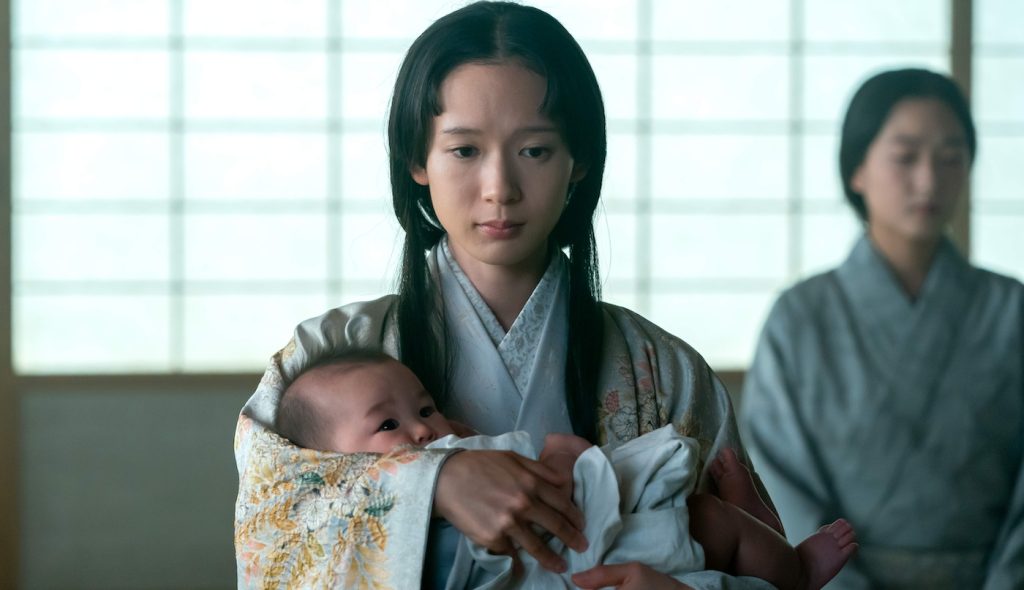
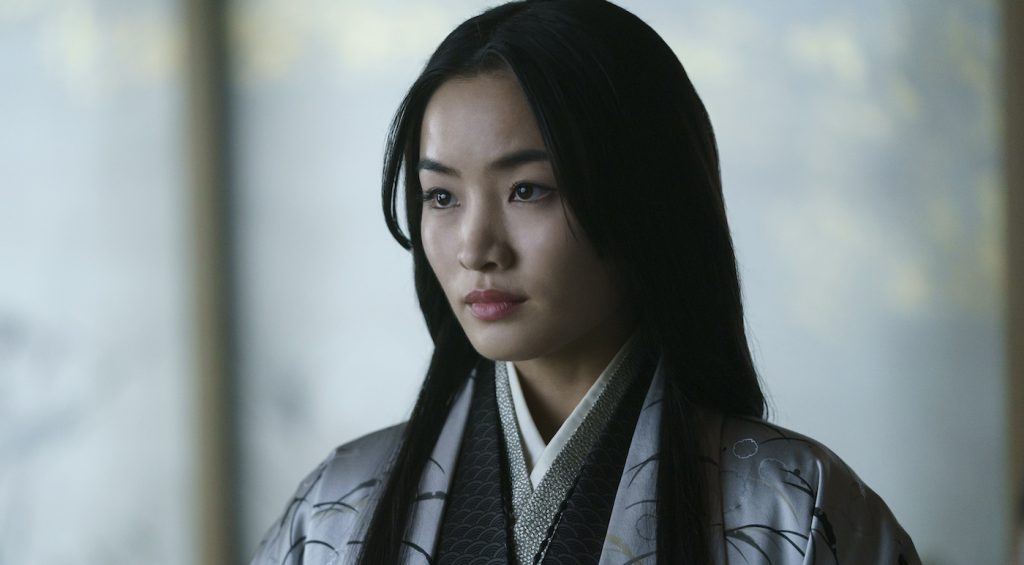
Aika: I have an easy answer [laughs]. So, in episode 9, I’m credited as an additional editor. I had an opportunity to do a female point-of-view cut. Thomas [Krueger] did an amazing job, and then Justin came to me later in the process and asked me to have a look and add a female point of view to the edit. At that point, episode 8’s intensity had been so high, and episode 9 needed a tweak to get it above that. So, I mainly touched on Mariko’s scenes, including when she’s fighting. A year after our job was finished, I looked back, and the scene in which I felt I contributed the most as a woman and a Japanese woman was Mariko’s fighting scene. That sequence was almost completely recut. The original choreography wasn’t long enough for us to feel like it was as intense as necessary. It felt like it needed more intensity when I watched it, so I tried to make it longer. If you look closely, she throws the naginata (the long staff with a blade at the end), and the guy catches it—that only happened once in the choreography, but if you watch the edit, you see it twice because I’m using the same choreography from different angles to make it seem like the fight was longer. I added Blackthorne and Ochiba watching and a sound layer underneath so that the sequence feels longer and more intense. Then I added Mariko’s scream at the end. I wanted to speak to the female point of view where we want to fight and we have the rebellious spirit. The writers said Mariko has this punk personality [laughs]. I relate to that and the frustration of being a woman and finding a way to fight. I really wanted Mariko to give everything in that scene.
For more on Shogun, check out stories about the lush costume design by Carlos Rosario, the high-tech take on ancient gagaku instrumentation from composers Atticus and Leo Ross and sound engineer Nick Chuba, and the fatally stylish, no-moves-wasted samurai swordplay created by stunt coordinator Lauro David Chartrand-DelValle.
Shogun is streaming now on Hulu.
Featured image: “SHOGUN” — “Crimson Sky” — Episode 9 (Airs April 16) Pictured (C): Anna Sawai as Toda Mariko. CR: Katie Yu/FX



